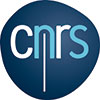Symposium
November 16, 2017 / 18:30
On the tenth anniversary of its foundation, the Istanbul Research Institute will host Discovering Byzantium in Istanbul: Scholars, Institutions, and Challenges, 1800–1955, a symposium examining the development of Byzantine studies in Istanbul during the nineteenth and early twentieth centuries. The symposium will take place at the Pera Museum, November 16–18, 2017.
At a time when classical antiquity continued to be the main attraction drawing Western scholars to the Eastern Mediterranean, Byzantine history and archaeology became a new field of competitive scientific exploration in the former Byzantine capital. Some of the major themes and issues to be addressed at Discovering Byzantium in Istanbul are scholars’ motivations and incentives for studying the empire founded by Constantine in 330 AD, the means by which they accessed the monuments and material wealth of Constantinople, what they were allowed to see and under what circumstances and conditions, and the networks they established among themselves and with authorities from government and cultural institutions. The activities of newly founded foreign institutes and museums are also examined, along with scientific competition at the international level, including the reactions of Turkish scholars.
The period covered by Discovering Byzantium in Istanbul begins with the emergence of major archaeological expeditions in the Eastern Mediterranean and is rich in major historical events and findings that brought the Ottoman Empire and the modern Turkish republic to the fore. It ends with the International Congress of Byzantine Studies convening its tenth conference, for the first time meeting in Istanbul. The contributions analyze archival material with the aim of bringing to light unknown and unexplored sources of research.
The symposium is being organized under the direction of Olivier Delouis and Brigitte Pitarakis, both from the Centre national de la recherche scientifique (CNRS) in Paris.
Click here for symposium program!
Take a look at the symposium booklet!
Free of admissions; drop in. This event will take place in Pera Museum’s auditorium. The event will be in English with simultaneous Turkish translation.


In collaboration

Pera Museum, in collaboration with Istanbul Foundation for Culture and Arts (İKSV), is one of the main venues for this year’s 15th Istanbul Biennial from 16 September to 12 November 2017. Through the biennial, we will be sharing detailed information about the artists and the artworks.
Tuesday - Saturday 10:00 - 19:00
Friday 10:00 - 22:00
Sunday 12:00 - 18:00
The museum is closed on Mondays.
On Wednesdays, the students can
visit the museum free of admission.
Full ticket: 300 TL
Discounted: 150 TL
Groups: 200 TL (minimum 10 people)